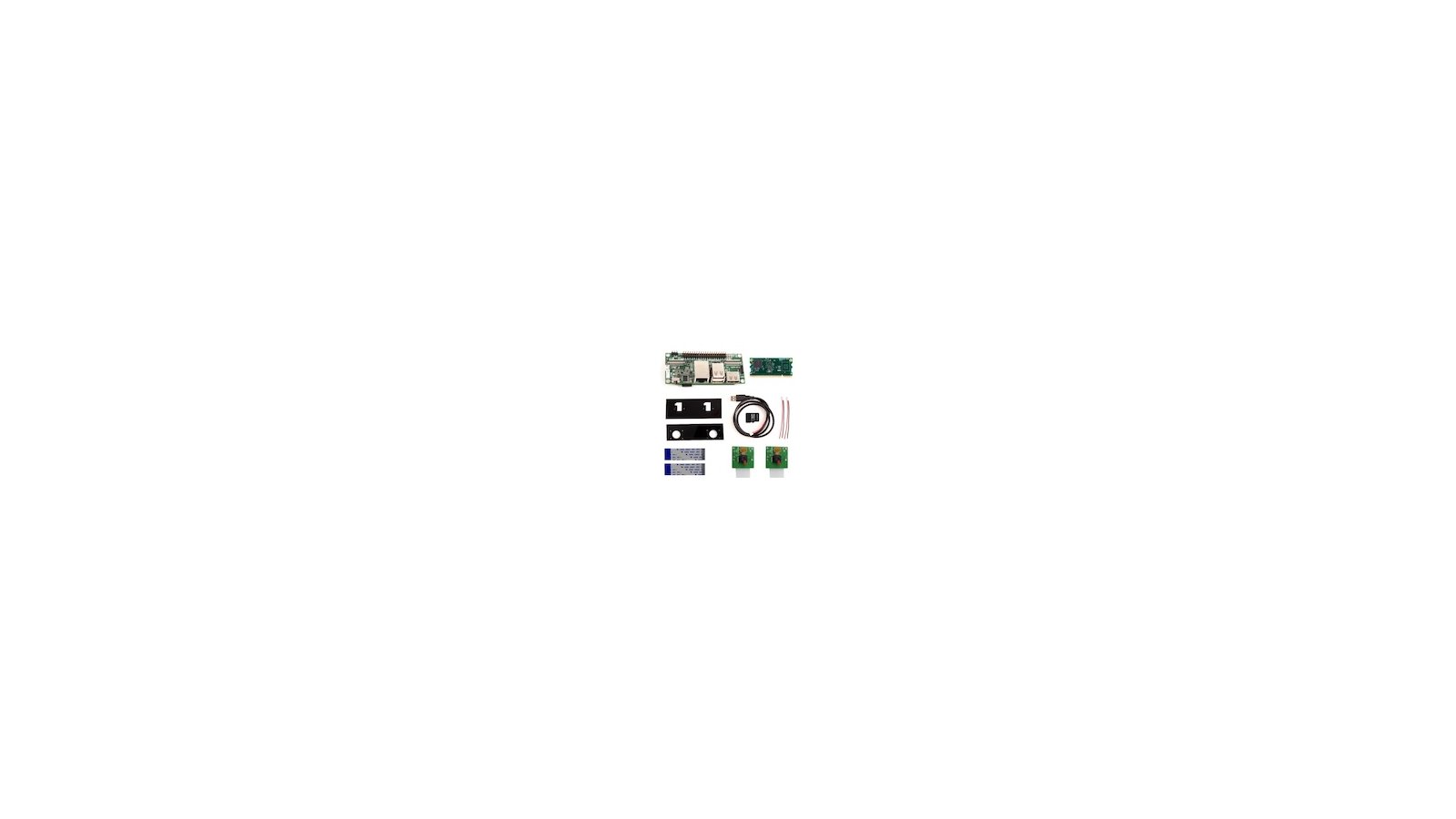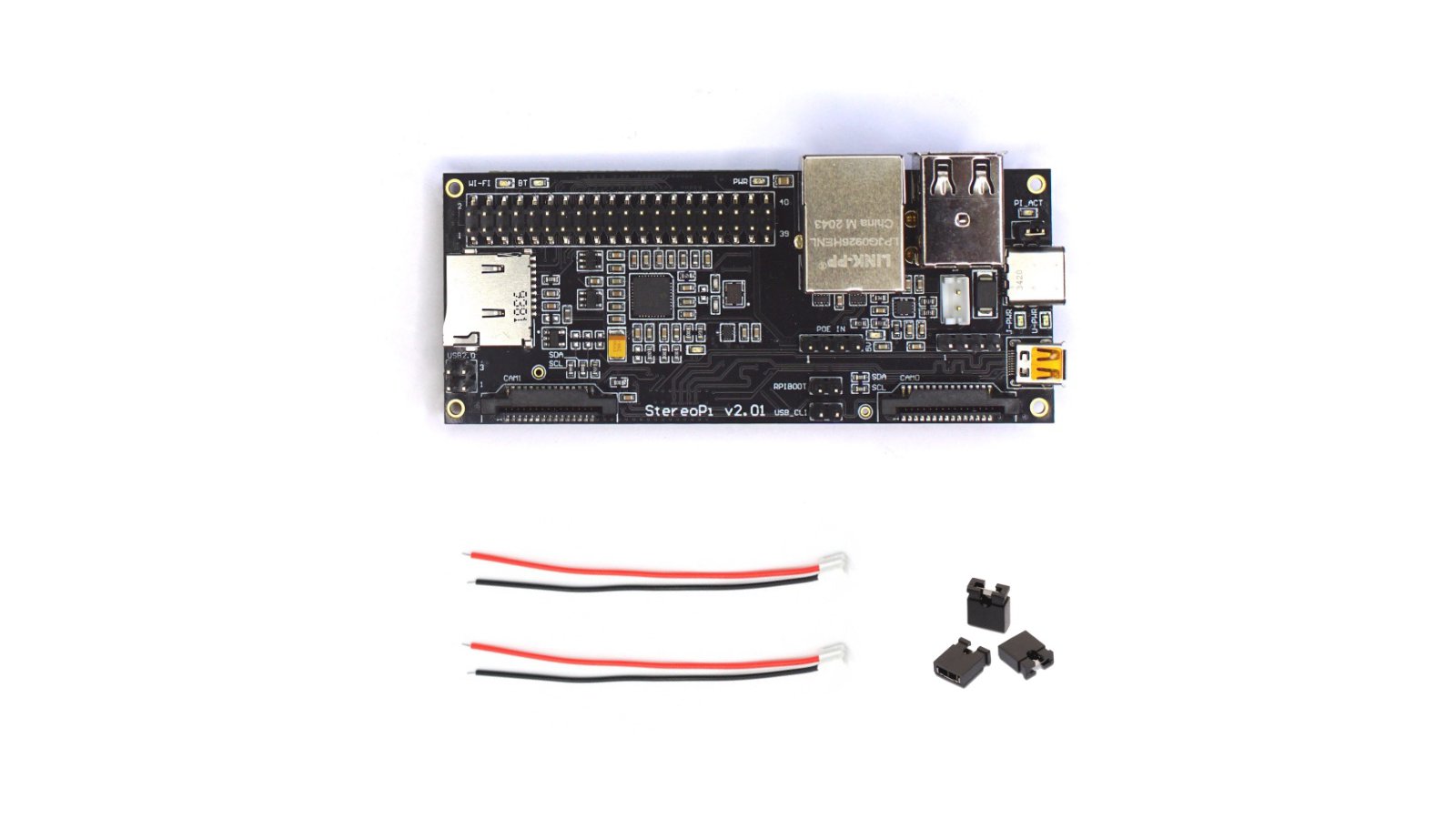
StereoPi Starter Kit
This kit has everything you need to get started right away. The kit includes one StereoPi Standard Edition board, two V1 cameras (w/ ~20 cm ribbon cables), one Raspberry Pi Compute Module 3 + Lite, and everything in the StereoPi Accessories Kit (two short ribbon cables, one USB power cable, two power cables, one V1/V2 dual-camera mounting plate, and one wide-angle dual-camera mounting plate). We've also included a microSD card pre-imaged with Raspbian and all the stereoscopic video and image demos you see on this project page.

StereoPi v2 Standard
The world of stereoscopic video awaits! This board is the ultimate interface between two cameras and a Raspberry Pi Compute Module. It comes with all the bells and whistles, including Ethernet, dual USB ports, GPIO header, microSD slot, HDMI output, and more. To use this board, you will need your own Raspberry Pi Compute Module, cameras, and camera ribbon cables. Two short power cables and three jumpers already included.